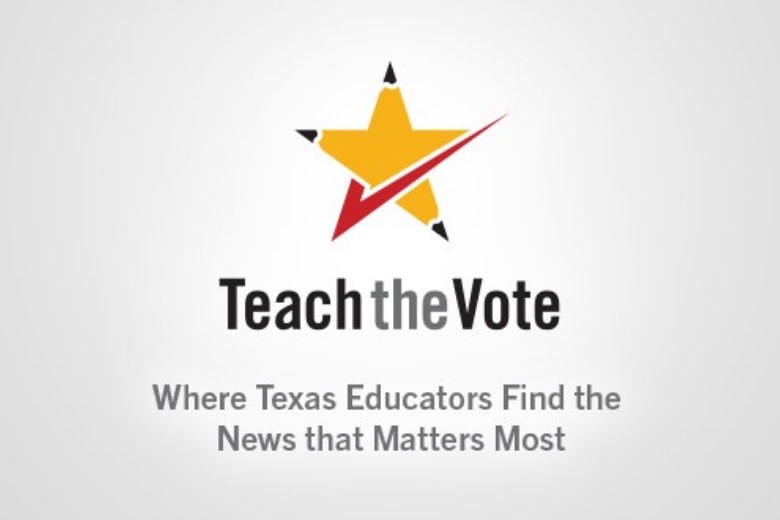New national report explores trends in teacher shortages, looks at teaching in Texas

Date Posted: 9/21/2016
 A new report by the Learning Policy Institute looks at teacher shortages in the United States, which the report indicates are a growing concern and offers policy recommendations to reverse the trend. The report states that while teachers were laid off in high numbers during the Great Recession, demand has since risen and projections continue to show a steep increase. Meanwhile, some current trends in the profession – declining enrollment in educator preparation programs, high attrition rates, and a rising student population – pose reason for concern.
Among its findings, the report pays particular attention to teacher attrition rates, which not only affect teacher shortages, but also carry a big cost and have a negative impact on student achievement. The report finds that keeping teachers in the classroom at a rate similar to that of other countries with high-achieving education systems, which would mean cutting our attrition rate roughly in half, would eliminate the teacher shortage altogether. The report also disproves popular rhetoric suggesting an aging workforce is the primary problem. It shows that roughly two-thirds of the attrition rate is made of teachers leaving prior to retirement, and they primarily leave due to some form of dissatisfaction.
Four major factors are highlighted as affecting recruitment and retention: compensation, preparation, mentoring and induction, and teaching conditions. For example: rates of attrition are higher in districts that pay lower salaries; teachers with little preparation are more than twice as likely to leave the profession than a fully-prepared teacher; high-quality mentoring received by novice teachers in their early years can significantly reduce attrition rates; and teacher retention is improved when administrative support is strong and teachers input is considered in decision making. The report also highlights major inequities in attrition rates, such as the fact that teachers working in high-minority, high-poverty schools and math and science teachers account for much higher turnover rates.
Based on the study’s findings, the Learning Policy Institute accompanies the report with an interactive tool that looks at a variety of factors to assign states’ a “teaching attractiveness rating” and a “teacher equity rating.” On a scale of 1 to 5, with 1 being the least desirable rating, Texas, unfortunately, receives a teaching attractiveness rating of 2 and a teacher equity rating of 2.3.
The interactive tool can be explored here and the report as well as its policy recommendations are available here.
A new report by the Learning Policy Institute looks at teacher shortages in the United States, which the report indicates are a growing concern and offers policy recommendations to reverse the trend. The report states that while teachers were laid off in high numbers during the Great Recession, demand has since risen and projections continue to show a steep increase. Meanwhile, some current trends in the profession – declining enrollment in educator preparation programs, high attrition rates, and a rising student population – pose reason for concern.
Among its findings, the report pays particular attention to teacher attrition rates, which not only affect teacher shortages, but also carry a big cost and have a negative impact on student achievement. The report finds that keeping teachers in the classroom at a rate similar to that of other countries with high-achieving education systems, which would mean cutting our attrition rate roughly in half, would eliminate the teacher shortage altogether. The report also disproves popular rhetoric suggesting an aging workforce is the primary problem. It shows that roughly two-thirds of the attrition rate is made of teachers leaving prior to retirement, and they primarily leave due to some form of dissatisfaction.
Four major factors are highlighted as affecting recruitment and retention: compensation, preparation, mentoring and induction, and teaching conditions. For example: rates of attrition are higher in districts that pay lower salaries; teachers with little preparation are more than twice as likely to leave the profession than a fully-prepared teacher; high-quality mentoring received by novice teachers in their early years can significantly reduce attrition rates; and teacher retention is improved when administrative support is strong and teachers input is considered in decision making. The report also highlights major inequities in attrition rates, such as the fact that teachers working in high-minority, high-poverty schools and math and science teachers account for much higher turnover rates.
Based on the study’s findings, the Learning Policy Institute accompanies the report with an interactive tool that looks at a variety of factors to assign states’ a “teaching attractiveness rating” and a “teacher equity rating.” On a scale of 1 to 5, with 1 being the least desirable rating, Texas, unfortunately, receives a teaching attractiveness rating of 2 and a teacher equity rating of 2.3.
The interactive tool can be explored here and the report as well as its policy recommendations are available here.
CONVERSATION
RECOMMENDED FOR YOU

12/12/2025
Dec. 8 filing deadline sets the stage for 2026 elections
Now’s the time to confirm your voter registration and update it if necessary.

12/12/2025
Teach the Vote’s Week in Review: Dec. 12, 2025
TEA announces plans to take over Lake Worth, Connally, and Beaumont ISDs. Plus: The ATPE Podcast is back with a refreshed format.

12/12/2025
From The Texas Tribune: Texas Education Agency taking over Lake Worth, Connally and Beaumont school districts
The three interventions come after the state’s education agency announced plans to take over Fort Worth ISD in October.

